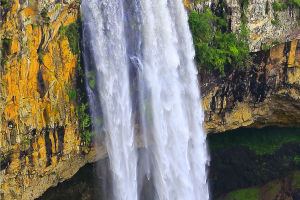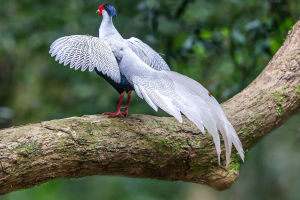Hello, Lykkers! The large white rhino is a fascinating creature, capturing the imagination of wildlife enthusiasts around the world.
Let’s delve into the life and significance of this majestic animal.
An Overview of the Large White Rhino
The large white rhino, scientifically known as Ceratotherium simum, is one of the largest land mammals on Earth. Despite its name, the “white” rhino isn’t actually white; the name is derived from the Dutch word "wijde," meaning "wide," which refers to its broad mouth. Weighing up to 2,300 kilograms (about 5,000 pounds) and standing at nearly 1.8 meters (6 feet) tall at the shoulder, the white rhino is an impressive sight. It is primarily found in southern Africa, where it inhabits grasslands and savannas.
Physical Characteristics
The large white rhino is characterized by its two horns, which are made of keratin, the same substance found in human hair and nails. The front horn can grow up to 1.5 meters (about 5 feet) long, making it a prominent feature. Its body is robust, with a large, square-shaped mouth designed for grazing on grass. Unlike its counterpart, the black rhino, which has a pointed mouth for browsing, the white rhino’s wide mouth allows it to efficiently consume large amounts of vegetation.
Majestic White Rhino | Ceratotherium simum Up-Close in the Wild
Video by Siva Free Spirit
Habitat and Behavior
White rhinos typically thrive in open habitats where they can easily access their primary food source—grass. They are social animals and often found in groups, especially females with their calves. Males, however, tend to be more solitary, establishing territories that they defend from rivals. White rhinos are primarily diurnal, meaning they are most active during the day, though they may graze at night, especially in areas with high human activity.
Conservation Status and Threats
Despite their impressive size and strength, large white rhinos face significant threats from poaching and habitat loss. Their horns are highly sought after in illegal wildlife trade, often used in traditional medicine and as status symbols. Conservation efforts have been ramped up in recent years, with various organizations working to protect these animals through anti-poaching initiatives and habitat preservation. The southern white rhino population has seen a remarkable recovery due to these efforts, though they remain vulnerable.
Role in Ecosystems
The large white rhino plays a vital role in its ecosystem. As grazers, they help maintain the grasslands, promoting biodiversity by allowing other plant species to thrive. Their feeding habits create pathways in the vegetation, benefiting other herbivores and facilitating new growth. By keeping the balance in their habitats, white rhinos contribute significantly to the health of the ecosystems they inhabit.
The large white rhino is a symbol of wildlife conservation and a testament to the resilience of nature. While challenges remain, ongoing efforts to protect this magnificent species are essential for its survival. As we continue to appreciate the beauty of the large white rhino, it’s crucial to advocate for its conservation, ensuring that future generations can also marvel at this extraordinary creature.


